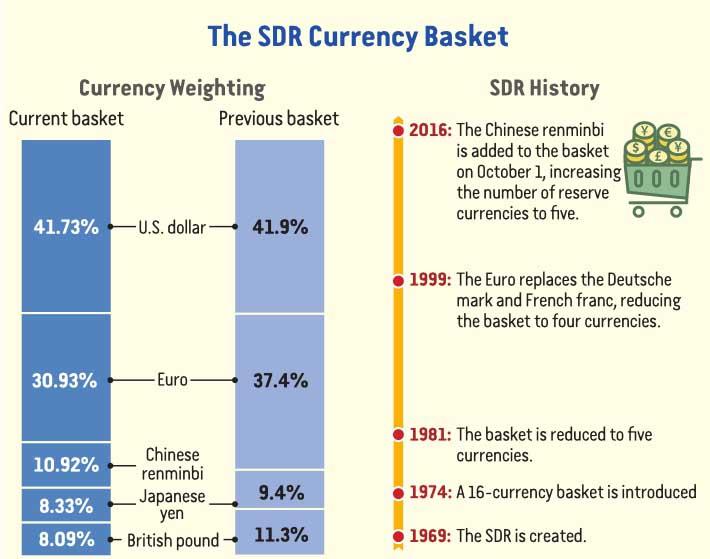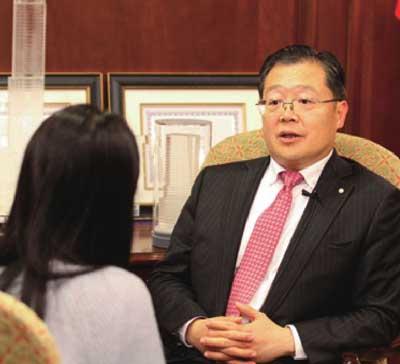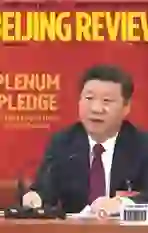Paying in RMB
2016-05-14ByCorrieDosh
By Corrie Dosh


The growing role of the Chinese ren- minbi (RMB), also known as the yuan, as a global currency and the designation of a clearing bank for it in the United States were a hot topic at the first-ever Shanghai Financial Innovation Forum in New York City, held on October 14.
RMB reforms have been a marketdriven process following the growth of Chinas economy, overseas investments, and the rise of the RMB as a global currency, said economists at the forum. The event was jointly hosted by the Shanghai Municipal Financial Services Office and the Information Office of Shanghai Municipality.
“The roadmap for RMB internationalization has followed and will follow three stages: [going] through global trade, crossborder investment and becoming a reserve currency,” said Huang Xiaojun, Managing Director, Chief Strategist and head of the Strategy and Research Department at Bank of Chinas New York Branch. Huang was addressing the Financial Committee of the China General Chamber of Commerce-U.S.A. in New York City on October 19 following the decision of the Peoples Bank of China (PBOC) in September to authorize Huangs bank to provide RMB clearing services in the United States.
The clearing banks establishment in the United States was also a response to the RMBs official inclusion in the International Monetary Funds Special Drawing Rights (SDR) basket of currencies on October 1.
“China fully understands the significant role of the market-based exchange rate setting mechanism of the RMB and its underlying stability,” Huang said. “Since the exchange rate reform in August 2015, a new mechanism for the RMBs central parity rate has been created, which was jointly determined by three elements: the clos- ing rate of the interbank foreign exchange rates market on the previous day, supply and demand in the market, and the price movements of major currencies.”
This year has been a challenge for RMB exchange rates due to global economic uncertainty sparked by Britains decision to leave the EU and the U.S. Federal Reserves reluctance to raise interest rates. Nonetheless, the RMB has been relatively stable and less volatile compared to other reserve currencies, Huang said.
This year was especially fruitful for the growth of an offshore RMB market in the United States, he continued. In June, the PBOC and the Federal Reserve signed a memorandum of cooperation to establish clearing arrangements. Also, for the first time, the PBOC granted $250 billion to RMB Qualified Foreign Institutional Investors in the United States.
Furthermore, the China Foreign Exchange Trade System announced plans for a new branch in New York to provide an electronic bidding system for the RMB to compete against other currencies and to facilitate interbank lending and bond trading. In addition, the total RMB clearing volume in the U.S. market reached nearly 10 trillion yuan ($1.48 trillion) in the first half of this year, making New York the fifth largest RMB offshore market, after Hong Kong, London, Singapore and Taiwan, Huang said.
However, there is still room for continued growth, as only 2.8 percent of all payments, by value, between the Chinese mainland/Hong Kong and the United States occur in RMB. In the first half of the year, the RMBs daily trading volume in the U.S. market was around $24 billion, or 1.9 percent of the total U.S. foreign exchange trading volume, while the U.S. market accounted for 9.5 percent of global RMB trading volume.
“We believe there is still plenty room for offshore RMB market development in the United States down the road,” Huang said. “We expect further enhancement of RMB-related business infrastructure, increasing trade payments denominated in the RMB, and more bilateral foreign exchange trading between the RMB and the U.S. dollar.” He added that more could be done by increasing the RMBs flow via cross-border investment and creating new RMB-related markets in cash management, financial investment products and risk management options.
Joining the party
Already, major financial institutions are vying to enter the RMB exchange market. The Chicago Mercantile Exchange has initiated offshore RMB futures and options trading, though the instruments have so far been trading very lightly. In addition, RMB asset-related exchange-traded fund products are taking shape in the United States, Huang said with options including RMB bonds, yuan-denominated stocks and commercial papers offered on the New York Stock Exchange.
U.S. banks like Morgan Stanley and Citigroup Inc. are also applying to clear yuan trades alongside Bank of Chinas New York Branch. The United States will have two banks clearing RMB trades, according to plans released by the PBOC, in part because of efforts by an advocacy group led by former New York Mayor Michael Bloomberg to petition the Chinese central bank to allow a U.S. bank to handle the business.
China usually designates just one Chinese bank to clear all yuan trades in other countries, Xu Chen, President and CEO of Bank of China USA, told Reuters. The sheer volume of two official clearing banks could be enough to catapult the United States to become the second largest offshore yuan clearing center after Hong Kong in three to five years.
“We also welcome banks in New York that meet the requirements to become a clearing bank for the RMB,” said Chinese Premier Li Keqiang during a visit to the Economic Club of New York in September.“Im sure that will further boost our cooperation.”
Such rapid growth has a number of conditional challenges. Choosing a settlement currency for international trade is largely based on the competence of domestic products and companies, Huang said. The growing Chinese outward direct investment (ODI) activity in the United States should foster further use of the RMB for foreign trade. According to a forecast by the National Committee on U.S.-China Relations and Rhodium Group, the total ODI from Chinese enterprises in the United States will reach $30 billion this year.
“Following the huge success in the negotiation of a bilateral investment treaty during the G20 Hangzhou Summit, Chinese ODI to the United States will keep growing,” Huang said.
However, if Chinas economic growth slows more than forecast, the RMB could be at risk of depreciation. The PBOC is reportedly doing all it can to keep the yuan stable on international markets. By opening up to more foreign currency exchanges, the RMB becomes more intractably tied to global economic trends. Investors must be reassured of the currencys continued stability.
“The governments means to revive economic confidence are limited,” the Economic Intelligence Unit (EIU), a British research organization, said in a recent analysis, pointing to deterioration in the services and manufacturing sectors, a drop-off in private investment, and growing national debt.
“If Chinas economy slows by more than we currently expect, it will further feed the ongoing global commodity price slump(especially in oil and, in particular, metals), with a hugely detrimental impact on those Latin American, Middle Eastern and subSaharan African states that had benefited from the earlier Chinese-driven boom in commodity prices,” said EIU economists in the report.
Chinese officials maintain that the countrys economy will grow by at least 6.5 percent annually between 2016 and 2020.
“Chinas economic fundamentals are sound. There is no basis for long-term depreciation in the renminbi,” said Vice Minister of Finance Zhu Guangyao in a state television address in August.
Future certainty
Despite the challenges, the opportunities that an RMB clearing bank in the United States represents are tremendous, say economists. Chinas growing economic might and its predicted rise to become the worlds largest economy have piqued investors interest in the currency.
“The establishment of an RMB clearing center in the United States is an important milepost in the RMBs journey to becoming a major international currency,” said Eswar Prasad, a senior professor at Cornell University and author of the upcoming book, Gaining Currency: The Rise of the Renminbi, at the Shanghai Forum in New York City. “Having RMB clearing take place in the worlds major international financial centers will be helpful in meeting this demand and, indeed, could have a catalytic effect in promoting the RMBs use.”
By making it easier to trade the RMB on foreign currency markets, China is sending a message that it will be a solid reserve currency for global markets that will benefit all economies.
“Opening new markets to U.S. businesses and creating new opportunities to grow are always good for the American economy, despite this years campaign rhetoric,” said Thomas J. Donohue, President and CEO of the U.S. Chamber of Commerce, in a press release by the Working Group on U.S. RMB Trading and Clearing led by Bloomberg. “The establishment of a clearing bank to provide RMB clearing and settlement services in the U.S. is one more step toward lower costs for U.S. businesses and consumers, while preserving our standing in the global economy.”
